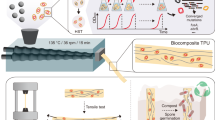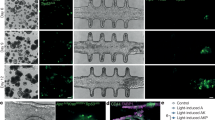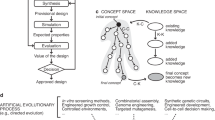Abstract
Bioengineering can address many important needs, from transformative biomedicine to environmental remediation. In addition to practical applications, the construction of new living systems will increase our understanding of biology and will nurture emerging intersections between biological and computational sciences. In this Review, we discuss the transition from cell-level synthetic biology to multicellular synthetic morphology. We highlight experimental embryology studies, including organoids and xenobots, that go beyond the familiar, default outcomes of embryogenesis, revealing the plasticity, interoperability and problem-solving capacities of life. In addition to traditional bottom-up engineering of genes and proteins, design strategies can be pursued based on modelling cell collectives as agential materials, with their own goals, agendas and powers of problem-solving. Such an agential bioengineering approach could transform developmental biology, regenerative medicine and robotics, building on frameworks that include active, computational and agential matter.
Key points
-
Synthetic bioengineering allows the construction of new arrangements of living material.
-
Synthetic morphology aims at creating an ‘anatomical compiler’ that writes DNA instructions based on a specific design goal.
-
Bottom-up bioengineering approaches are limited by knowledge gaps in developmental biology, thus relying on the micromanagement of passive materials.
-
Cells and tissues are effectively manipulated as agential materials, by targeting their pattern memory and homeostatic capabilities.
-
Extending bottom-up approaches by adding empirically and computationally characterized agential materials (cells and tissues) will greatly improve the rational creation and repair of complex morphologies.
This is a preview of subscription content, access via your institution
Access options
Subscribe to this journal
Receive 12 digital issues and online access to articles
$99.00 per year
only $8.25 per issue
Buy this article
- Purchase on Springer Link
- Instant access to full article PDF
Prices may be subject to local taxes which are calculated during checkout






Similar content being viewed by others
References
Davies, J. A. Synthetic morphology: prospects for engineered, self-constructing anatomies. J. Anat. 212, 707–719 (2008).
Kamm, R. D. et al. Perspective: the promise of multi-cellular engineered living systems. APL Bioeng. 2, 040901 (2018).
Fields, C. & Levin, M. Competency in navigating arbitrary spaces as an invariant for analyzing cognition in diverse embodiments. Entropy https://doi.org/10.3390/e24060819 (2022).
Cunha, G. R. & Baskin, L. Mesenchymal–epithelial interaction techniques. Differentiation 91, 20–27 (2016).
Vainio, S., Lin, Y. & Pihlajaniemi, T. Induced repatterning of type XVIII collagen associates with ectopic Sonic hedgehog and lung surfactant C gene expression and changes in epithelial epigenesis in the ureteric bud. J. Am. Soc. Nephrol. 14, S3–S8 (2003).
Lemus, D. Contributions of heterospecific tissue recombinations to odontogenesis. Int. J. Dev. Biol. 39, 291–297 (1995).
Bessho, Y. et al. Planarian mitochondria sequence heterogeneity: relationships between the type of cytochrome c oxidase subunit I gene sequence, karyotype and genital organ. Mol. Ecol. 6, 129–136 (1997).
Martinez Arias, A., Nichols, J. & Schroter, C. A molecular basis for developmental plasticity in early mammalian embryos. Development 140, 3499–3510 (2013).
Schmid, T. & Hajnal, A. Signal transduction during C. elegans vulval development: a NeverEnding story. Curr. Opin. Genet Dev. 32, 1–9 (2015).
Vandenberg, L. N., Adams, D. S. & Levin, M. Normalized shape and location of perturbed craniofacial structures in the Xenopus tadpole reveal an innate ability to achieve correct morphology. Dev. Dyn. 241, 863–878 (2012).
Blackiston, D. J. & Levin, M. Ectopic eyes outside the head in Xenopus tadpoles provide sensory data for light-mediated learning. J. Exp. Biol. 216, 1031–1040 (2013).
Fankhauser, G. Maintenance of normal structure in heteroploid salamander larvae, through compensation of changes in cell size by adjustment of cell number and cell shape. J. Exp. Zool. 100, 445–455 (1945).
Fankhauser, G. The effects of changes in chromosome number on amphibian development. Q. Rev. Biol. 20, 20–78 (1945).
Pezzulo, G. & Levin, M. Top-down models in biology: explanation and control of complex living systems above the molecular level. J. R. Soc. Interface https://doi.org/10.1098/rsif.2016.0555 (2016).
Nanos, V. & Levin, M. Multi-scale chimerism: an experimental window on the algorithms of anatomical control. Cell Dev. 169, 203764 (2022).
Emmons-Bell, M. et al. Regenerative adaptation to electrochemical perturbation in planaria: a molecular analysis of physiological plasticity. iScience 22, 147–165 (2019).
Levin, M. The biophysics of regenerative repair suggests new perspectives on biological causation. Bioessays 42, e1900146 (2020).
Harris, A. K. The need for a concept of shape homeostasis. Biosystems 173, 65–72 (2018).
Levin, M. Collective intelligence of morphogenesis as a teleonomic process. Preprint at https://doi.org/10.31234/osf.io/hqc9b (2022).
Clawson, W. P. & Levin, M. Endless forms most beautiful 2.0: teleonomy and the bioengineering of chimaeric and synthetic organisms. Biol. J. Linn. Soc. https://doi.org/10.1093/biolinnean/blac073 (2022).
Cachat, E., Liu, W., Hohenstein, P. & Davies, J. A. A library of mammalian effector modules for synthetic morphology. J. Biol. Eng. 8, 26 (2014).
Martínez-Ara, G. et al. Optogenetic control of apical constriction induces synthetic morphogenesis in mammalian tissues. Nat. Commun. 13, 5400 (2022).
Toda, S., Blauch, L. R., Tang, S. K. Y., Morsut, L. & Lim, W. A. Programming self-organizing multicellular structures with synthetic cell–cell signaling. Science 361, 156–162 (2018).
Cachat, E. et al. 2- and 3-dimensional synthetic large-scale de novo patterning by mammalian cells through phase separation. Sci. Rep. 6, 20664 (2016).
Sekine, R., Shibata, T. & Ebisuya, M. Synthetic mammalian pattern formation driven by differential diffusivity of Nodal and Lefty. Nat. Commun. 9, 5456 (2018).
Cao, Y. et al. Collective space-sensing coordinates pattern scaling in engineered bacteria. Cell 165, 620–630 (2016).
Cachat, E., Liu, W. & Davies, J. A. Synthetic self‐patterning and morphogenesis in mammalian cells: a proof‐of‐concept step towards synthetic tissue development. Eng. Biol. 1, 71–76 (2017).
Chvykov, P. et al. Low rattling: a predictive principle for self-organization in active collectives. Science 371, 90–95 (2021).
McGivern, P. Active materials: minimal models of cognition? Adapt. Behav. 28, 441–451 (2019).
Watson, R. A., Buckley, C. L., Mills, R. & Davies, A. Associative memory in gene regulation networks. in Artificial Life Conference XII, 194–201 (2022).
Pezzulo, G. & Levin, M. Re-membering the body: applications of computational neuroscience to the top-down control of regeneration of limbs and other complex organs. Integr. Biol. 7, 1487–1517 (2015).
Baluska, F. & Levin, M. On having no head: cognition throughout biological systems. Front. Psychol. 7, 902 (2016).
Saigusa, T., Tero, A., Nakagaki, T. & Kuramoto, Y. Amoebae anticipate periodic events. Phys. Rev. Lett. 100, 018101 (2008).
Berry, M. J. 2nd, Brivanlou, I. H., Jordan, T. A. & Meister, M. Anticipation of moving stimuli by the retina. Nature 398, 334–338 (1999).
Katz, Y. Embodying probabilistic inference in biochemical circuits. Preprint at https://arxiv.org/abs/1806.10161 (2018).
El Azhar, Y. & Sonnen, K. F. Development in a dish — in vitro models of mammalian embryonic development. Front. Cell Dev. Biol. 9, 655993 (2021).
Wilson, H. V. Development of sponges from dissociated tissue cells. Bull. US Bur. Fish. 1910, 1–10 (1910).
Unbekandt, M. & Davies, J. A. Dissociation of embryonic kidneys followed by reaggregation allows the formation of renal tissues. Kidney Int. 77, 407–416 (2010).
Gilmour, D., Rembold, M. & Leptin, M. From morphogen to morphogenesis and back. Nature 541, 311–320 (2017).
Mills, C. G. et al. Asymmetric BMP4 signalling improves the realism of kidney organoids. Sci. Rep. 7, 14824 (2017).
Spemann, H. & Mangold, H. Induction of embryonic primordia by implantation of organizers from a different species. Arch. Mikrosk. Anat. Enwicklmech. 100, 599–638 (1924).
Glykofrydis, F., Cachat, E., Berzanskyte, I., Dzierzak, E. & Davies, J. A. Bioengineering self-organizing signaling centers to control embryoid body pattern elaboration. ACS Synth. Biol. 10, 1465–1480 (2021).
ten Berge, D. et al. Wnt signaling mediates self-organization and axis formation in embryoid bodies. Cell Stem Cell 3, 508–518 (2008).
Levin, M. Bioelectric signaling: reprogrammable circuits underlying embryogenesis, regeneration, and cancer. Cell 184, 1971–1989 (2021).
Harris, M. P. Bioelectric signaling as a unique regulator of development and regeneration. Development https://doi.org/10.1242/dev.180794 (2021).
Kralj, J. M., Hochbaum, D. R., Douglass, A. D. & Cohen, A. E. Electrical spiking in Escherichia coli probed with a fluorescent voltage-indicating protein. Science 333, 345–348 (2011).
Yang, C. Y. et al. Encoding membrane-potential-based memory within a microbial community. Cell Syst. 10, 417–423 (2020).
Prindle, A. et al. Ion channels enable electrical communication in bacterial communities. Nature 527, 59–63 (2015).
Fields, C., Bischof, J. & Levin, M. Morphological coordination: a common ancestral function unifying neural and non-neural signaling. Physiology 35, 16–30 (2020).
Levin, M. & Martyniuk, C. J. The bioelectric code: an ancient computational medium for dynamic control of growth and form. Biosystems 164, 76–93 (2018).
Sundelacruz, S., Levin, M. & Kaplan, D. L. Role of membrane potential in the regulation of cell proliferation and differentiation. Stem Cell Rev. Rep. 5, 231–246 (2009).
Levin, M., Pezzulo, G. & Finkelstein, J. M. Endogenous bioelectric signaling networks: exploiting voltage gradients for control of growth and form. Annu. Rev. Biomed. Eng. 19, 353–387 (2017).
Vandenberg, L. N., Morrie, R. D. & Adams, D. S. V-ATPase-dependent ectodermal voltage and pH regionalization are required for craniofacial morphogenesis. Dev. Dyn. 240, 1889–1904 (2011).
Adams, D. S. et al. Bioelectric signalling via potassium channels: a mechanism for craniofacial dysmorphogenesis in KCNJ2-associated Andersen–Tawil syndrome. J. Physiol. 594, 3245–3270 (2016).
Beane, W. S., Morokuma, J., Adams, D. S. & Levin, M. A chemical genetics approach reveals H,K-ATPase-mediated membrane voltage is required for planarian head regeneration. Chem. Biol. 18, 77–89 (2011).
Williams, K. B. et al. Regulation of axial and head patterning during planarian regeneration by a commensal bacterium. Mech. Dev. 163, 103614 (2020).
Pai, V. P. et al. HCN2 rescues brain defects by enforcing endogenous voltage pre-patterns. Nat. Commun. 9, 998 (2018).
Tseng, A. S., Beane, W. S., Lemire, J. M., Masi, A. & Levin, M. Induction of vertebrate regeneration by a transient sodium current. J. Neurosci. 30, 13192–13200 (2010).
Pai, V. P., Aw, S., Shomrat, T., Lemire, J. M. & Levin, M. Transmembrane voltage potential controls embryonic eye patterning in Xenopus laevis. Development 139, 313–323 (2012).
Blackiston, D. J., Vien, K. & Levin, M. Serotonergic stimulation induces nerve growth and promotes visual learning via posterior eye grafts in a vertebrate model of induced sensory plasticity. NPJ Regen. Med. 2, 8 (2017).
Tseng, A. & Levin, M. Cracking the bioelectric code: probing endogenous ionic controls of pattern formation. Commun. Integr. Biol. 6, e22595 (2013).
Beane, W. S., Morokuma, J., Lemire, J. M. & Levin, M. Bioelectric signaling regulates head and organ size during planarian regeneration. Development 140, 313–322 (2013).
Oviedo, N. J. et al. Long-range neural and gap junction protein-mediated cues control polarity during planarian regeneration. Dev. Biol. 339, 188–199 (2010).
Durant, F. et al. The role of early bioelectric signals in the regeneration of planarian anterior/posterior polarity. Biophys. J. 116, 948–961 (2019).
Pezzulo, G., LaPalme, J., Durant, F. & Levin, M. Bistability of somatic pattern memories: stochastic outcomes in bioelectric circuits underlying regeneration. Phil. Trans. R. Soc. Lond. B 376, 20190765 (2021).
Durant, F. et al. Long-term, stochastic editing of regenerative anatomy via targeting endogenous bioelectric gradients. Biophys. J. 112, 2231–2243 (2017).
Mustard, J. & Levin, M. Bioelectrical mechanisms for programming growth and form: taming physiological networks for soft body robotics. Soft Robot. 1, 169–191 (2014).
Adams, D. S. & Levin, M. Endogenous voltage gradients as mediators of cell-cell communication: strategies for investigating bioelectrical signals during pattern formation. Cell Tissue Res. 352, 95–122 (2013).
Sundelacruz, S., Levin, M. & Kaplan, D. L. Depolarization alters phenotype, maintains plasticity of predifferentiated mesenchymal stem cells. Tissue Eng. Part A 19, 1889–1908 (2013).
Wolf, A. E., Heinrich, M. A., Breinyn, I. B., Zajdel, T. J. & Cohen, D. J. Short-term bioelectric stimulation of collective cell migration in tissues reprograms long-term supracellular dynamics. PNAS Nexus 1, pgac002 (2022).
Levin, M. The computational boundary of a ‘Self’: developmental bioelectricity drives multicellularity and scale-free cognition. Front. Psychol. 10, 2688 (2019).
Chernet, B. T., Adams, D. S., Lobikin, M. & Levin, M. Use of genetically encoded, light-gated ion translocators to control tumorigenesis. Oncotarget 7, 19575–19588 (2016).
Chernet, B. T. & Levin, M. Transmembrane voltage potential is an essential cellular parameter for the detection and control of tumor development in a Xenopus model. Dis. Model. Mech. 6, 595–607 (2013).
Pai, V. P. et al. Endogenous gradients of resting potential instructively pattern embryonic neural tissue via Notch signaling and regulation of proliferation. J. Neurosci. 35, 4366–4385 (2015).
Kriegman, S., Blackiston, D., Levin, M. & Bongard, J. A scalable pipeline for designing reconfigurable organisms. Proc. Natl Acad. Sci. USA 117, 1853–1859 (2020).
Park, S. J. et al. Phototactic guidance of a tissue-engineered soft-robotic ray. Science 353, 158–162 (2016).
Aydin, O. et al. Neuromuscular actuation of biohybrid motile bots. Proc. Natl Acad. Sci. USA 116, 19841–19847 (2019).
Blackiston, D. et al. A cellular platform for the development of synthetic living machines. Sci. Robot. 6, eabf1571 (2021).
Pesavento, U. An implementation of von Neumann’s self-reproducing machine. Artif. Life 2, 337–354 (1995).
Jones, R. D. et al. Robust and tunable signal processing in mammalian cells via engineered covalent modification cycles. Nat. Commun. 13, 1720 (2022).
Rinaudo, K. et al. A universal RNAi-based logic evaluator that operates in mammalian cells. Nat. Biotechnol. 25, 795–801 (2007).
Macia, J. et al. Implementation of complex biological logic circuits using spatially distributed multicellular consortia. PLoS Comput. Biol. 12, e1004685 (2016).
Steventon, B., Busby, L. & Arias, A. M. Establishment of the vertebrate body plan: rethinking gastrulation through stem cell models of early embryogenesis. Dev. Cell 56, 2405–2418 (2021).
Kauffman, S. A. The Origins of Order: Self Organization and Selection in Evolution (Oxford Univ. Press, 1993).
Arias Del Angel, J. A., Nanjundiah, V., Benitez, M. & Newman, S. A. Interplay of mesoscale physics and agent-like behaviors in the parallel evolution of aggregative multicellularity. Evodevo 11, 21 (2020).
Newman, S. A. Inherency of form and function in animal development and evolution. Front. Physiol. 10, 702 (2019).
Newman, S. A. & Comper, W. D. ‘Generic’ physical mechanisms of morphogenesis and pattern formation. Development 110, 1–18 (1990).
Beloussov, L. V. Mechanically based generative laws of morphogenesis. Phys. Biol. 5, 015009 (2008).
Wagner, A. & Rosen, W. Spaces of the possible: universal Darwinism and the wall between technological and biological innovation. J. R. Soc. Interface 11, 20131190 (2014).
Turner, J. S. The Tinkerer’s Accomplice: How Design Emerges from Life Itself (Harvard Univ. Press, 2010).
Rosenblueth, A., Wiener, N. & Bigelow, J. Behavior, purpose, and teleology. Philos. Sci. 10, 18–24 (1943).
Levin, M. Technological approach to mind everywhere: an experimentally-grounded framework for understanding diverse bodies and minds. Front. Syst. Neurosci. 16, 768201 (2022).
Kriegman, S. et al. in 2020 3rd IEEE International Conference on Soft Robotics, 359–366 (RoboSoft, 2020).
Rubenstein, M., Cornejo, A. & Nagpal, R. Programmable self-assembly in a thousand-robot swarm. Science 345, 795–799 (2014).
Cheney, N., Bongard, J. C. & Lipson, H. Evolving soft robots in tight spaces. GECCO'15 Proc. Annu. Conf. Genet. Evol. Comput. https://doi.org/10.1145/2739480.2754662 (2015).
Cheney, N., Clune, J. & Lipson, H. Evolved electrophysiological soft robots. ALIFE 14, 222–229 (2014).
Rule, J. S., Tenenbaum, J. B. & Piantadosi, S. T. The child as hacker. Trends Cogn. Sci. 24, 900–915 (2020).
Davies, J. A. Mechanisms of Morphogenesis (Academic, 2013).
Stone, J. R. The spirit of D’Arcy Thompson dwells in empirical morphospace. Math. Biosci. 142, 13–30 (1997).
Avena-Koenigsberger, A., Goni, J., Sole, R. & Sporns, O. Network morphospace. J. R. Soc. Interface https://doi.org/10.1098/rsif.2014.0881 (2015).
Cervera, J., Levin, M. & Mafe, S. Morphology changes induced by intercellular gap junction blocking: a reaction–diffusion mechanism. Biosystems 209, 104511 (2021).
Emmons-Bell, M. et al. Gap junctional blockade stochastically induces different species-specific head anatomies in genetically wild-type Girardia dorotocephala flatworms. Int. J. Mol. Sci. 16, 27865–27896 (2015).
Churchill, C. D. M., Winter, P., Tuszynski, J. A. & Levin, M. EDEn — electroceutical design environment: an ion channel database with small molecule modulators and tissue expression information. iScience 11, 42–56 (2018).
Nieuwkoop, P. D. & Faber, J. Normal Table of Xenopus laevis (Daudin) (Garland, 1994).
Kriegman, S., Blackiston, D., Levin, M. & Bongard, J. Kinematic self-replication in reconfigurable organisms. Proc. Natl Acad. Sci. USA https://doi.org/10.1073/pnas.2112672118 (2021).
Lyon, P. The biogenic approach to cognition. Cogn. Process. 7, 11–29 (2006).
Acknowledgements
We thank J. Poirier for assistance with manuscript preparation. M.L. acknowledges support via grant 62212 from the John Templeton Foundation and grant TWCF0606 of the Templeton World Charity Foundation. J.D. acknowledges support via the European Commission (grant CyGenTig), the Biotechnology and Biological Sciences Research Council (grant BB/M018040/1) and the Medical Research Council (grant MR/R026483/1). The opinions expressed in this publication are those of the authors and do not necessarily reflect the views of the funders.
Author information
Authors and Affiliations
Contributions
Both authors contributed equally to all aspects of this paper.
Corresponding author
Ethics declarations
Competing interests
The authors declare no competing interests.
Peer review
Peer review information
Nature Reviews Bioengineering thanks Leonardo Morsut and the other, anonymous, reviewer(s) for their contribution to the peer review of this work.
Additional information
Publisher’s note Springer Nature remains neutral with regard to jurisdictional claims in published maps and institutional affiliations.
Rights and permissions
Springer Nature or its licensor (e.g. a society or other partner) holds exclusive rights to this article under a publishing agreement with the author(s) or other rightsholder(s); author self-archiving of the accepted manuscript version of this article is solely governed by the terms of such publishing agreement and applicable law.
About this article
Cite this article
Davies, J., Levin, M. Synthetic morphology with agential materials. Nat Rev Bioeng 1, 46–59 (2023). https://doi.org/10.1038/s44222-022-00001-9
Accepted:
Published:
Issue Date:
DOI: https://doi.org/10.1038/s44222-022-00001-9
This article is cited by
-
Collective intelligence: A unifying concept for integrating biology across scales and substrates
Communications Biology (2024)
-
Automatic design of gene regulatory mechanisms for spatial pattern formation
npj Systems Biology and Applications (2024)
-
Materials with agency
Nature Materials (2023)
-
Bioelectric networks: the cognitive glue enabling evolutionary scaling from physiology to mind
Animal Cognition (2023)
-
Darwin’s agential materials: evolutionary implications of multiscale competency in developmental biology
Cellular and Molecular Life Sciences (2023)



